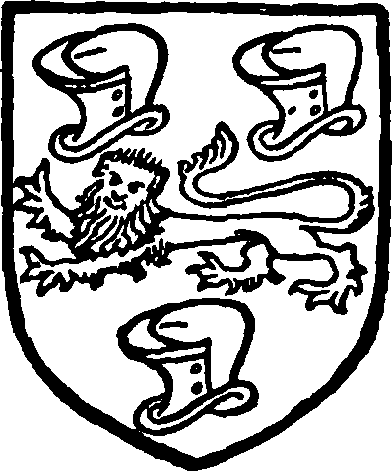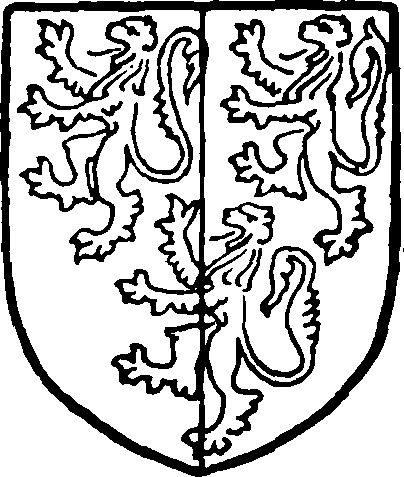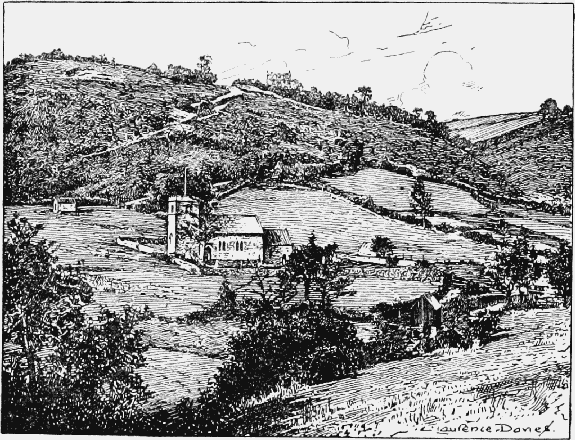A History of the County of York North Riding: Volume 2. Originally published by Victoria County History, London, 1923.
This free content was digitised by double rekeying. All rights reserved.
'Parishes: Levisham', in A History of the County of York North Riding: Volume 2, ed. William Page( London, 1923), British History Online https://prod.british-history.ac.uk/vch/yorks/north/vol2/pp450-453 [accessed 26 November 2024].
'Parishes: Levisham', in A History of the County of York North Riding: Volume 2. Edited by William Page( London, 1923), British History Online, accessed November 26, 2024, https://prod.british-history.ac.uk/vch/yorks/north/vol2/pp450-453.
"Parishes: Levisham". A History of the County of York North Riding: Volume 2. Ed. William Page(London, 1923), , British History Online. Web. 26 November 2024. https://prod.british-history.ac.uk/vch/yorks/north/vol2/pp450-453.
In this section
LEVISHAM
Leuecen, Leuuecen (xi cent.); Leweseham (xii cent.); Levesham (xiii–xvii cent.); Levezham, Levesam (xiv cent.); Leveysham alias Leysham alias Lewsam (xvi cent.); Leavisham (xviii–xix cent.).
The area of the township and parish is 2,976 acres, of which a large proportion is arable. (fn. 1) The subsoil is Corallian Beds, Kimmeridge Clay and Oxford Clay, the soil loam, lime and sand; barley, oats and turnips are grown. In 1209–10 and the 14th century the tenant of the manor paid rent for an iron forge (fn. 2) in his wood of Levisham to the lord of Pickering; as forester in fee of Scalby and the East Ward of Pickering Forest (fn. 3) he had the minerals within his bailiwick. (fn. 4) There are now disused ironworks in the north-west of the parish, and limestone and freestone quarries are now worked in the same district. Salt used to be obtained, probably near Saltergate on Lockton Low Moor in the north-east. Between 1221 and 1224 the lord of the manor granted to Malton Priory, in the territory of Levisham, the land called Dundale (the centre of Levisham Moor), pasture for 1,000 sheep and 120 other animals and 60 quarters of salt receivable yearly from the salterns and lands of Fulstow, (fn. 5) in Lincolnshire; lands regained by the lord about 1260. (fn. 6)
The parish lies between the Havern and Pickering Becks, which rise on the adjacent moors of Lockton and Levisham and meet in the south on their way to the River Derwent. The land varies in height from about 200 ft. to 825 ft. above the ordnance datum, the ground descending abruptly to the becks on each side, which flow between well-wooded banks. Farwath, near their meeting-place, forms the south corner of Levisham parish. The manorial mill of Levisham is mentioned in 1246 and later (fn. 7) and stands on Levisham Beck.
The village of Levisham, standing on high ground on the east side of the Pickering Valley, is built round a large green formed by the widening of the road to Lockton; at the north end is a duck-pond. The hall on the west side is a small 18th-century building and none of the cottages are of any great age, but the village standing on the edge of the moor has a clean and open character which renders it particularly attractive. Near the hall stands a small modern chapel of ease to St. Mary's. It is rendered necessary by the fact that the parish church stands by a ford over Levisham Beck, nearly half a mile south-west of the village and almost 300 ft. below its level.
Levisham was once 'in the heart of the forest.' (fn. 8) Small rectangular earthworks connect the dikes on the moor. (fn. 9) There are numerous springs, some chalybeate. By Saltergate Bank is Gallows Dike, where the lord of the manor did justice on malefactors. (fn. 10)
Levisham has a station a mile east of the village on the Whitby and Pickering branch of the North Eastern railway. The public elementary school was rebuilt in 1856 and the free school (fn. 11) has been amalgamated with it.
Manor
LEVISHAM was in 1086 composed of 2 carucates 6 oxgangs and was soke of the king's manor of Pickering. (fn. 12) When the manor was conveyed to Hugh Bigod Henry III changed the tenure from socage to military service, (fn. 13) and Levisham continued to be held of the honour of Pickering. (fn. 14) The under-tenant was one of the foresters in fee of what was at first called Scalby Forest and afterwards the East Ward of Pickering Forest. (fn. 15) King John in March 1203–4 confirmed to Ralph de Bolebec and his heirs the bailiwick of the 'Haya' of Scalby and of Scalby Forest as he had held it in the time of Henry II. (fn. 16) In 1209–10 the second Ralph de Bolebec gave to the king 80 marks and a palfrey for having his father's bailiwick in Scalby Forest and an iron forge in his wood of Levisham. (fn. 17) The lords of Levisham were foresters in fee of Scalby Forest until 1354, (fn. 18) when the bailiwick was forfeited. (fn. 19) In 1528, 1545 and 1585, however, the owners of the manor had the forestership of the forest of Blakey Moor, (fn. 20) probably the district between the forests of Pickering and Danby (fn. 21) (q.v.), and in 1619–21 Sir Richard Etherington was said to hold the manor by the service of being forester in fee of the East Ward. (fn. 22)
The second Ralph de Bolebec had sons Ralph and Osbert (fn. 23) the former died childless in 1252 (fn. 24) seised of the manor and advowson. Osbert sold his lands in Levisham, Lockton, Scalby, Pickering and Newton to Hugh Bigod, to whom they were confirmed by the king in 1255–6. (fn. 25) Hugh, younger son of Hugh third Earl of Norfolk, was succeeded by his son Roger, who became Earl of Norfolk in 1270. (fn. 26) Peter Toly of Driffield and John son of William de Marske claimed the mill and half the manor against Earl Roger in 1276, saying that Denise, their ancestor, had been seised in the time of Henry II. The earl pleaded the charter of Henry III to his father, (fn. 27) and no more is heard of these claimants. The Earl of Norfolk in 1302 or 1303 conveyed the manor and the advowson to Robert de Beverley, clerk, a grant confirmed by Edward I in 1303. (fn. 28) In 1309 Beverley had licence to grant the manor to Godfrey de Meaux, (fn. 29) knighted in 1306. (fn. 30) Godfrey entered into possession, (fn. 31) and died seised of two-thirds of the manor and of a messuage called Pertrehall in York about 1311, leaving a son and heir John, aged twenty-nine weeks, (fn. 32) and a widow Scolastica. (fn. 33) The custody of these two-thirds and of the advowson was sold by the king in 1312 to Master Thomas de Levisham for £100. (fn. 34) The bailiwick of Scalby Hay was seized by the Earl of Lancaster and came into the king's hands in 1322, whereupon Scolastica prayed that it might be given her as parcel of the manor which she held of Thomas de Levisham until the majority of the heir. (fn. 35) The 'lady of Levisham' paid the subsidy in 1327, (fn. 36) but her son John de Meaux had succeeded by 1332–3. (fn. 37) In 1352 John de Meaux had licence to grant the manor to William Percehay of Ryton and Isabel his wife and their issue with remainder to William's right heirs. (fn. 38) The Percehays of Ryton (q.v.) now held Levisham Manor and advowson until the 16th century, (fn. 39) with the exception of a break in 1405, when Sir Robert Percehay's lands were forfeited for taking part in the Scrope rising, and £23 rent from Levisham and Wrelton was granted to Sir David Rawcliffe (fn. 40) for life, (fn. 41) a rent exchanged for those manors in 1406. (fn. 42) David died seised in 1407, (fn. 43) after which Levisham returned to Sir Robert Percehay and descended with Ryton (fn. 44) until Walter Percehay of Ryton and William his brother and heir sold the manor and advowson of Levisham and forestership of Blakey Moor to Sir William Compton in 1519, (fn. 45) but William Percehay repurchased them in 1523, undertaking to alienate them only to Sir William Compton and his heirs. (fn. 46) Sir William Compton (of Compton, Warwickshire), however, died seised in 1528, leaving a son and heir Peter. (fn. 47) Peter died a minor in 1548, leaving an infant son Henry, (fn. 48) who was summoned to Parliament as Lord Compton in 1572 and early in 1576–7 conveyed the manor and advowson to Sir Robert Stapleton, kt. (fn. 49) Sir Robert had licence in 1582 to grant them to Brian Boys, John Poad, John Reade and George Fairwether, (fn. 50) and they in 1585 had licence to alienate the same and the forestership of Blakey Moor to Henry Gate of Seamer (q.v.) and Edward Gate. (fn. 51) Sir Henry Gate died seised in 1589, leaving a son and heir Edward, (fn. 52) who apparently alienated Levisham to Sir Richard Etherington. Sir Richard, who held all the great offices of the liberty, (fn. 53) was forester in fee of the East Ward in 1608, (fn. 54) and therefore had probably already acquired the manor, as he held it by that service in 1619–21. (fn. 55) Sir Richard and his eldest son Thomas alienated Ebberston (q.v.) in 1629. Richard Etherington and his son Thomas made a conveyance of the rectory of Rillington in 1670. (fn. 56) The Etheringtons were still in possession of Levisham in 1716, when Robert son of Thomas Etherington of Rillington sued his guardian. (fn. 57) In the first half of the 19th century the estate was in the hands of the rector, the Rev. Robert Skelton (fn. 58); he sold the manor to James Walker, who was lord in 1857. Henry Hood was lord of the manor in 1872, and it afterwards passed to Cuthbert Johnson of Aykleyheads and Captain Johnson in 1879, and was held by Cuthbert Greenwood Johnson, Francis Dixon Johnson and Henry Hood in 1889. The manorial rights were in the possession of Mr. Barnes Wimbush in 1893. He died in 1910 and the manor is now in the hands of two of his sons. (fn. 59)

Compton. Sable a leopard or between three helms argent.

Etherington. Party argent and sable three lions countercoloured.
Ralph de Bolebec gave land and pasture here to Malton Priory, (fn. 60) which further obtained a mill and land from Ralph son of Ralph in 1250. (fn. 61) This last grant was confirmed by William de Forz Earl of Albemarle. (fn. 62) The holding of the priory afterwards passed by exchange to Hugh Bigod (fn. 63) and followed the descent of the manor.
Roger Bigod Earl of Norfolk claimed that the right of gallows was appurtenant to the manor of Levisham and that by the common custom of the country every lord of a vill had amendment of the assize of ale. (fn. 64) John de Meaux in 1334 established his right to housebote and haybote for himself and tenants in his woods of Levisham, estover, turves, aeries of falcons, merlins and sparrow-hawks and honey in his woods as well as the appointment of a woodward. (fn. 65) He was, however, compelled to compound for his claim to make and burn charcoal of browsewood and dry wood in his woods of Levisham and expose the charcoal for sale, as these woods were within the forest and charcoal burning injured the beasts and caused loss to the Earl of Lancaster. (fn. 66)
Churches
The church of ST. MARY, which was to a great extent rebuilt in the early years of the 19th century, is a small aisleless building consisting of chancel 21 ft. 6 in. by 11 ft., nave 33 ft. by 18 ft. and west tower. The external walls are almost entirely modern reconstruction, but the eastern wall of the nave with the chancel arch dates at any rate from the 11th century and may be pre-Conquest.

Levisham Church
The chancel has a modern east window of three lancet lights with another lancet and a piscina, also modern, in the south wall. The 11th-century chancel arch has a plain semicircular head with square responds and imposts chamfered on the lower edge. The span of the arch is only 5 ft. 6 in. Preserved in the chancel are three sculptured stones of the Saxon period. Two of these are evidently portions of one tomb slab and bear the head and tail of the bound dragon carefully carved in low relief. The third stone is a small cross-head, much defaced, with a boss in the centre. In the sanctuary is an early 18th-century chair, and a table of similar date stands in the modern vestry on the north. The nave is almost entirely modern. The font, an ungainly example of the baluster type, dates from the 18th century, as does the pyramidal cover. On the nave walls are a number of modern memorials of the Skelton family.
The tower at the west end was built in 1897 and is three stages high, with an embattled parapet. It contains two small bells, one, inscribed 'Voco veni precare 1708,' cast by Samuel Smith of York, and the second evidently mediaeval and bearing two inscriptions in Lombardic letters. The upper reads, 'Ave Maria gracia plena,' with a fleur de lis between each two words, the lower, 'Iohannes Sleght me fecit.'
Built into the church walls at various points are a number of pre-Conquest fragments, including a portion of a cross-shaft with interlacing work at the south-east angle of the chancel. A stone water-spout near by may possibly be part of a Saxon baluster. A fragment of a second dragon slab is built into the west face of the tower, and other much-worn stones exist in other walls of the building.
The plate of the church includes a cup (York. 1638) made by Robert Harrington, a cover of the same date and maker, a pewter flagon in the form of a tankard and a modern pewter paten.
The entries of baptisms and burials 1653–61 are found in the registers of Pickering. The registers previous to 1812 are as follows: (i) mixed entries 1700 to 1736; (ii) mixed entries 1713 to 1812; (iii) marriages 1758 to 1812; (iv) baptisms and burials 1786 to 1812.
The chapel of ease to St. Mary's occupies the site and is said to incorporate the materials of an ancient chapel. This building, which was rectangular on plan and constructed of rubble masonry, became roofless during the first half of the 19th century, and the existing structure replaced its ruins in 1884. It is a small aisleless building with a triple-light east window, a north porch and a bellcote containing one bell on the west gable. The quire was lengthened in 1900. The only object of interest within the chapel is the 11thcentury font, rescued from a farm-yard, and probably once belonging to the parish church. It is a rude circular bowl with a cable moulding carried round just below the rim. On one side is a rough cross cut in low relief and near it a primitive bishop's crook.
Advowson
The advowson of the rectory descended with the manor (q.v.) until at least 1702, (fn. 67) the Crown presenting in 1698, (fn. 68) in the minority of Robert Etherington. Mary Wykes presented in 1752, (fn. 69) and in 1780 Isaac Wykes, clerk, and Hannah his wife conveyed the rectory, all tithes and the advowson to Robert Harding, (fn. 70) who presented in 1786. (fn. 71) Sarah Skelton presented in 1818, (fn. 72) and was patron in 1822 (fn. 73) and 1829 (fn. 74); the Rev. R. Skelton, the lord of the manor, was patron from 1836 to 1868, (fn. 75) but had sold his rights to a Mr. Appleby before 1859 (fn. 76); the Rev. F. Owston was patron 1869–77, (fn. 77) Miss R. Berry 1878–1900, (fn. 78) and Mr. Barnes Wimbush until 1910, the patronage being now in the hands of Mrs. Wimbush.
Charities
The Poor's Land, the origin of which is unknown, now consists of 3 r. 23 p. of woodland, the only profit from which arises from the sale of the timber thereon. The official trustees hold a sum of £64 15s. 1d. consols from this source, the dividends of which, amounting to £1 12s. 4d., are given to poor widows. A rent-charge of £1 a year out of land in Glaisdale was formerly distributed among poor widows, together with an ancient payment of 10s. a year out of a piece of woodland called West Bank. These payments have apparently ceased to be collected.
A free school was founded by deed (enrolled) of 18 March 1793, in execution of the will of John Poad, dated 10 December 1785, whereby certain lands at Normanby were devised subject to a charge of £11 a year to be applied towards the instruction of children of the townships of Lockton and Levisham. The school has been merged in the elementary school, which was rebuilt in 1856.
